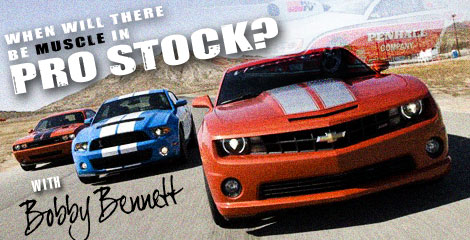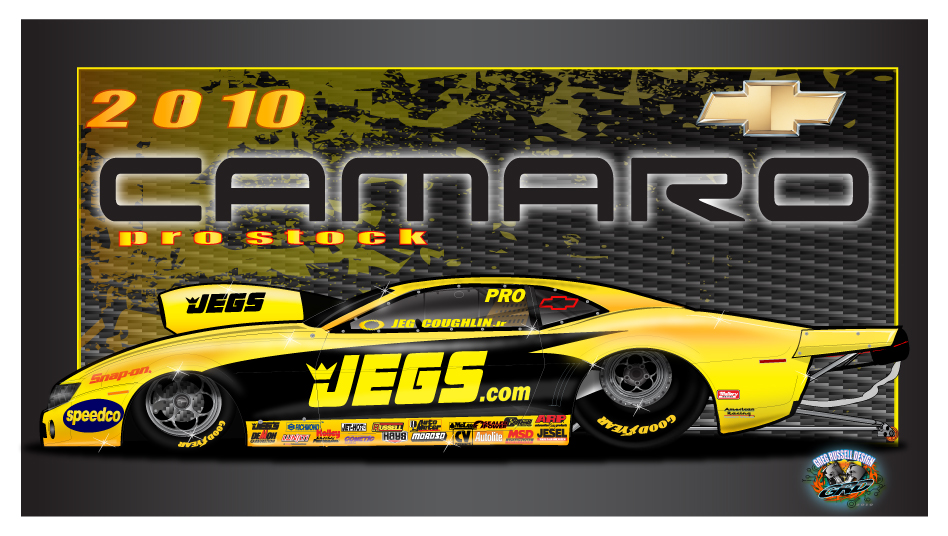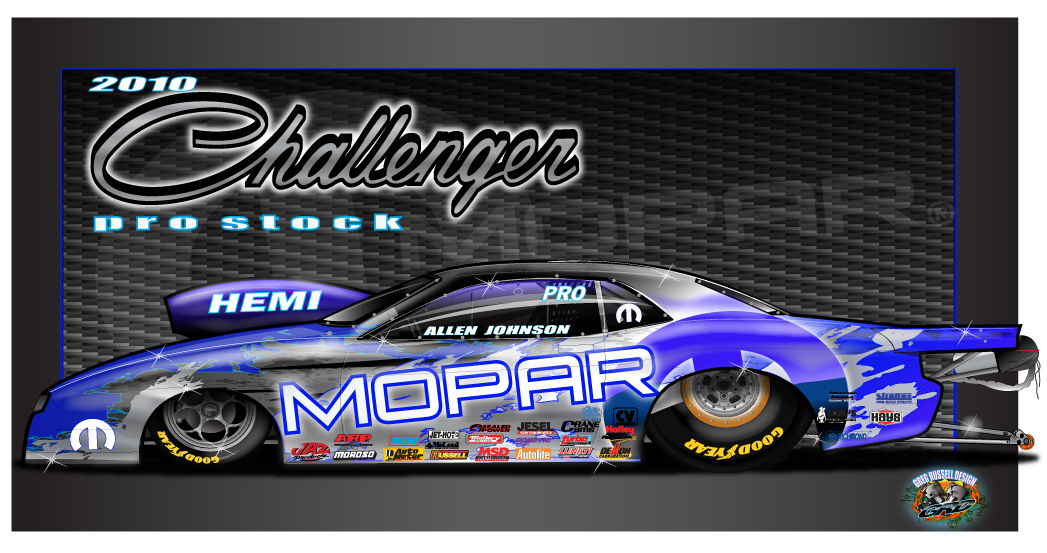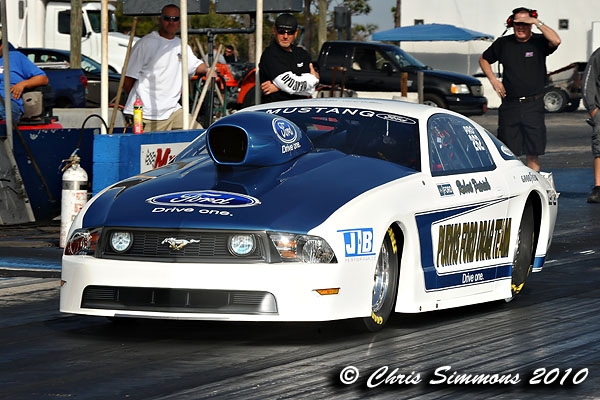BOBBY BENNETT: WHERE HAS THE MUSCLECAR PRO STOCKER GONE?
Wed, 2010-05-05 20:54
 There was a time when Pro Stock was about the muscle car, the epitome of Super Stock on steroids.
There was a time when Pro Stock was about the muscle car, the epitome of Super Stock on steroids.
It was the highest level of doorslammer racing in the early 1970s.
When Pro Stock first burst onto the NHRA scene in 1970, the class was a healthy mix of the muscle cars Detroit offered. Chevrolet had the Camaro, Chrysler the Barracudas and Challengers and Ford the Mustangs and to a lesser degree, the Maverick.

It was the highest level of doorslammer racing in the early 1970s.
When Pro Stock first burst onto the NHRA scene in 1970, the class was a healthy mix of the muscle cars Detroit offered. Chevrolet had the Camaro, Chrysler the Barracudas and Challengers and Ford the Mustangs and to a lesser degree, the Maverick.
Then something went wrong.
All of a sudden, the Vegas, Pintos and Colts … became the showcase for Detroit on the strip.
Forty years later the Vegas and Colts are alive and well, just updated as Cobalts and Avengers.
Pardon me I just got very, very ill. In talking with many Pro Stock enthusiasts, every time a manufacturer trots out a new car to promote within Pro Stock, they get the same feeling.
Maybe it’s time, along with Detroit, Pro Stock reinvents itself. There’s no doubt the two can help one another.
Why in the world, when Detroit is on the ropes in terms of sales, aren’t they trying to push their retro muscle cars, the big-to-do amongst the performance enthusiasts?
Ford, presently, is on the right path with their Mustangs, but once upon a time they were guilty of dumbing down Pro Stock. In the past, the Blue Oval brigade spent a fair amount of time pushing the Ford Escort, Probe and Thunderbirds, none of which could get out of their own way in gravel.
I always wondered why Ford never pushed their galloping 5.0 Mustangs during Bob Glidden’s heyday.
Sadly, those days are gone.
a d v e r t i s e m e n t
Click to visit our sponsor's website

After a tumultuous two years in Detroit, I was disappointed when this year at Pomona we didn’t see the new Camaro lining up against the reinvented Challenger only to mix it up with the retro Mustangs.
In talking to some of those close to the fabrication processes of a Pro Stock car, I learned two key elements have been the key stumbling blocks in the introduction of these retro wonders.
Politics and money are the key reasons Pro Stock will likely remain status quo.
The selection of Pro Stock cars is limited to production two door coupes and two door sedans and those cars selected to run are at the discretion of the manufacturer.
Those decisions are usually made by the manufacturer a couple of years in advance.
If I had disposable income and lots of it, and I wanted to step outside of the corporate edict with either a new Camaro or Challenger to run with either a Mike Edwards or Allen Johnson power plant it could be done.
Production of the new car would start with the body.
A new body style can consume as many as nine months to a year in development, just for the first trip to the wind-tunnel. In today’s Pro Stock world, wind tunnel time is king.

By the time you add up the development and wind tunnel costs, you are out-of-pocket nearly $250,000 just to develop the “mule” car. Bear in mind, this cost does not include the cost for someone to build a mold for the body. All said, at this point, there’s nearly $350,000 into the project.

Then comes the approval processes. The NHRA has to provide its blessings, along with the manufacturer.
Several manufacturers have confirmed a Challenger and Camaro could have been done, but the adjustments to the body lines would stray from the original design offered at the dealership.
So, you’ve invested the time and financial resources into bringing out these new designs – the manufacturer always has the option to issue a cease and desist to prevent anyone from reproducing their intellectual property.
I look at the new cars represented, the Mustang, Avenger, Cobalt and GXP, and the first thing I do is throw out the GXP because Pontiac no longer exists, and the Mustang; it was essentially created by Ford enthusiasts, who wanted to run a car by the manufacturer. The manufacturer saw their enthusiasm as free advertising.
I’m just wondering, if you’re marketing cars as Chevrolet and Chrysler was at the time they chose their present offerings, and surely to goodness knowing you had a Camaro and a Challenger coming down the pipe, what were they thinking?
Did they honestly believe the Cobalt and a four-door Avenger would excite the fans? If they did, no wonder they needed the bailout money.
Why couldn’t NHRA, in reinvesting in this class which is essentially drag racing’s equivalent to NASCAR, absorb the cost of the production of these mule cars in a good faith measure for the manufacturers who supported their program over the last few decades? This would be where politics takes over. Clearly the NHRA couldn't invest in cars which would lack total manufacturer support. Additionally, if the NHRA got into the business of designing bodies how soon would it be before, as in NASCAR, you couldn't tell one car from another without a decal.
If a good measure of the retro cars lost their identity in the designing process, wouldn’t an altered Camaro or Challenger still look better than what’s out there, seeing how those cars have been chopped up too?
And while they’re at it, make it an EFI class too.
Pro Stock is a purist eliminator. It always has been, and always will be.
Somewhere along the line the purists ceased to matter to those who control the Pro Stock marketplace. If the purist mattered, we’d see the retro wonders running up and down the strips on the NHRA Full Throttle Series.
Instead, they have the familiar taste of stomach bile.
| {loadposition feedback} |
Categories:





































